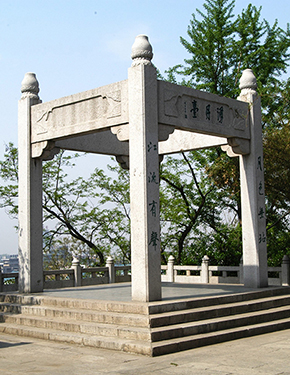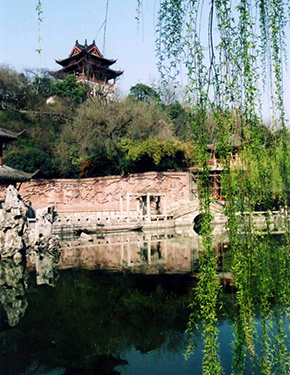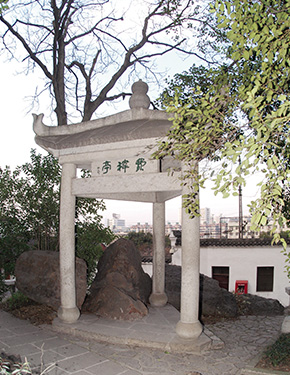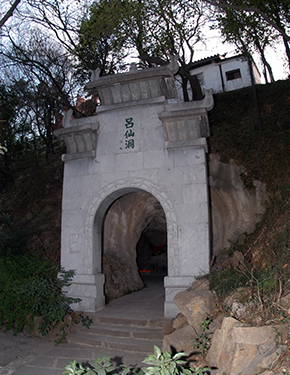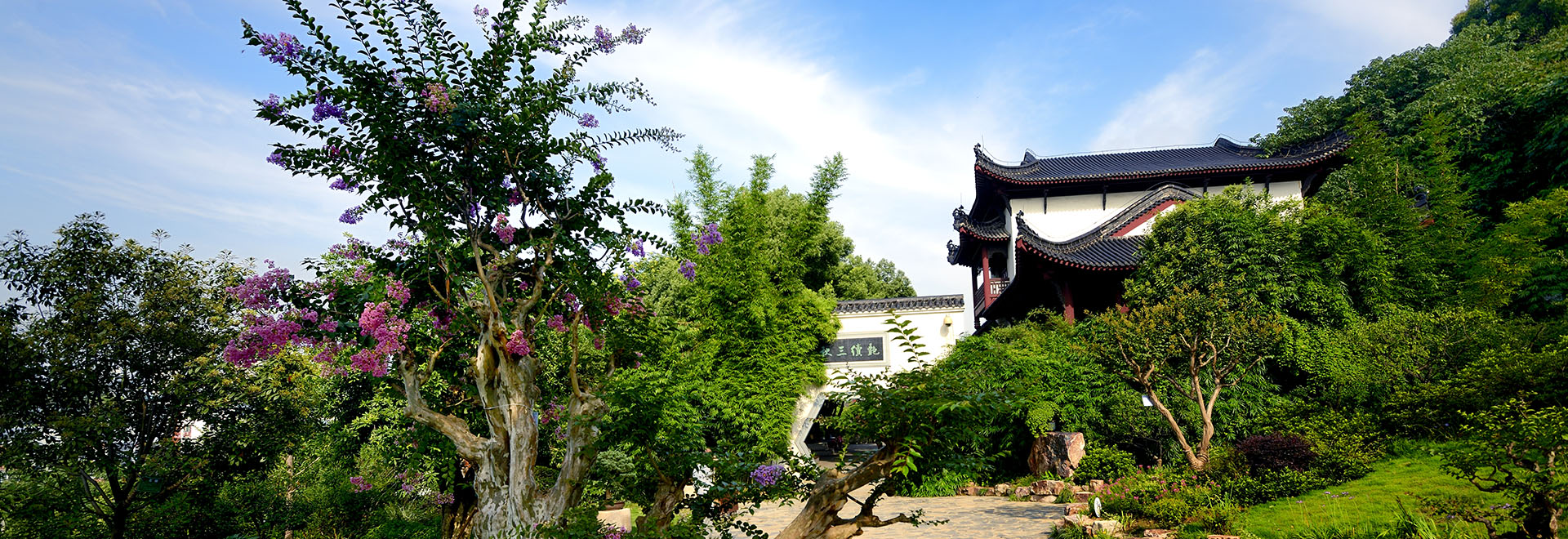
Pavilion of Mao Zedong’s Lyrics
- Nomal
- Enlarge
- Reduce
This pavilion sits to the southeast of South Tower in the Southern Section, 206 m southeast of Yellow Crane Tower and 90 m southwest of White Cloud Pavilion.
From 1918 to 1922, young Mao Zedong stayed in Wuhan 5 times during his trips to Beijing, Shanghai and back to Hunan. He resided in Hengjietou, Huangtupo at the foot of Snake Mountain and discussed with Hui Daiying, Chen Tanqiu and other revolutionists the way out for China. In 1926 when CPC and Nationalist Party were in cooperation, Mao visited Wuhan from Shanghai to review the peasant movement along the Yangtze valley as Chief of Agriculture Commission of CPC Central Committee, Alternate Member of Nationalist Party Central Execution Committee and Member of the Standing Commission of Nationalist Party Central Peasant Movement Commission. In the spring next year, he set up Nationalist Party Central Peasant Movement Institute at Wuchang’s Hong Lane below the Tower of Profound Wisdom. Shortly afterwards, Chiang Kai-shek initiated “April 12 Coup.” Wuhan Nationalist Government’s leaders like Wang Jingwei also orchestrated a split with the communists. Mao realized that the CPC was in jeopardy and thus submitted in writing his opinions of “Quickly Addressing Land Problem for Peasants, Establishing Rural Revolutionist Regime and Developing Armed Peasant Forces” in the CPC 5th Congress held at Wuhan on April 27. However, the CPC Central Committee never tabled such insights. Even Mao himself was ruled out of the leadership and deprived of the voting right. At that time, he felt nothing but a gush of powerless pathos. In a late spring day, he walked through the bustling street and ascended Snake Mountain before visiting the old site of Yellow Crane Tower. All that he could see was a bleak cluster of collapsed walls in the misty rain. Only Turtle and Snake Mountains rose there silent. The dismal scenery and the harsh reality inspired Mao to improvise Buddhist Dancer: Standing on Yellow Crane Tower,
Wide wide flow the Nine Rivers through our motherland; deep deep the North and South are severed by a single thread. Misty rains blur the air amid a lingering haze; Turtle and Snake Mountains hold the Great River in watchful gaze.
Whither has the yellow crane gone? Only this tower keeps visitors in throngs. With my wine I drink to challenge the unceasing flow. My mind’s tide swells high keeping the waves in hold.
This lyric was first published in Issue 1, 1957 of Poetry Bimonthly. As to the background, in 1958 the author himself added a note, “In the spring of 1927, I fell into a dismal mood on the eve of the failed Great Revolution. At that time, I had no idea what to do. That’s the case in that spring...”
From October 1949 the birth of New China to his demise in 1976, Mao had been keen on this land. He visited Wuhan 36 times and ascended Snake Mountain many times, including one stay as long as 168 days. Yet he swam across the Wuhan section of Yangtze River for more than 100 km. On May 31, 1956, he dived into water upstream from Yellow Crane Tower and passed through the piers of Wuhan Yangtze River Bridge under construction, starting his first trip on the river. On June 2 and 3, he swam there another two times and wrote down Water Song: Swimming,
I have just drunk the waters of Changsha; and come to eat the fish of Wuchang. Now I am swimming across the great Yangtze, looking afar to the open sky of Chu. Let the wind blow and waves beat, better far than idly strolling in a courtyard. Today I am at ease. "It was by a stream that Confucius said--'Thus do things flow away!' "
Sails move with the wind. Turtle and Snake are still. Great plans are afoot: A bridge will fly to span the north and south, turning a deep chasm into a thoroughfare; walls of stone will stand upstream to the west to hold back Wushan's clouds and rain till a smooth lake rises in the narrow gorges. The mountain goddess if she is still there will marvel at a world so changed.
The author here expressed his feelings about the first swimming through the Yangtze River. Furthermore, the line “hold back Wushan's clouds and rain” suggests his farsighted notion of building a giant dam at Yichang along the Three Gorges.
In 1992, the pavilion was erected on a 2.16-m-high pedestal of anti-aircraft defense at the present site. Facing the south, it features 6.6 m length, 6.6 m width and 9.5 m height. Pyramid roof and double eaves stretched out steep this square edifice in a quaint ambience. Moreover, its floor is paved with two layers of grey round bricks. In the center of this building supported by four columns stands a large grey stone stele that is 3.2 m tall, 1.8 m wide and 0.245 m thick. The southern and northern sides are inscribed with Buddhist Dancer: Standing on Yellow Crane Tower and Water Song: Swimming, the former of which was written in the spring of 1927 while the latter written in June 1956. The enlarged inscriptions and the elegant calligraphy are set in perfect tune. Besides, the pavilion name is the handwriting of Wu Xiuquan previous Deputy Chief of the General Staff of PLA.
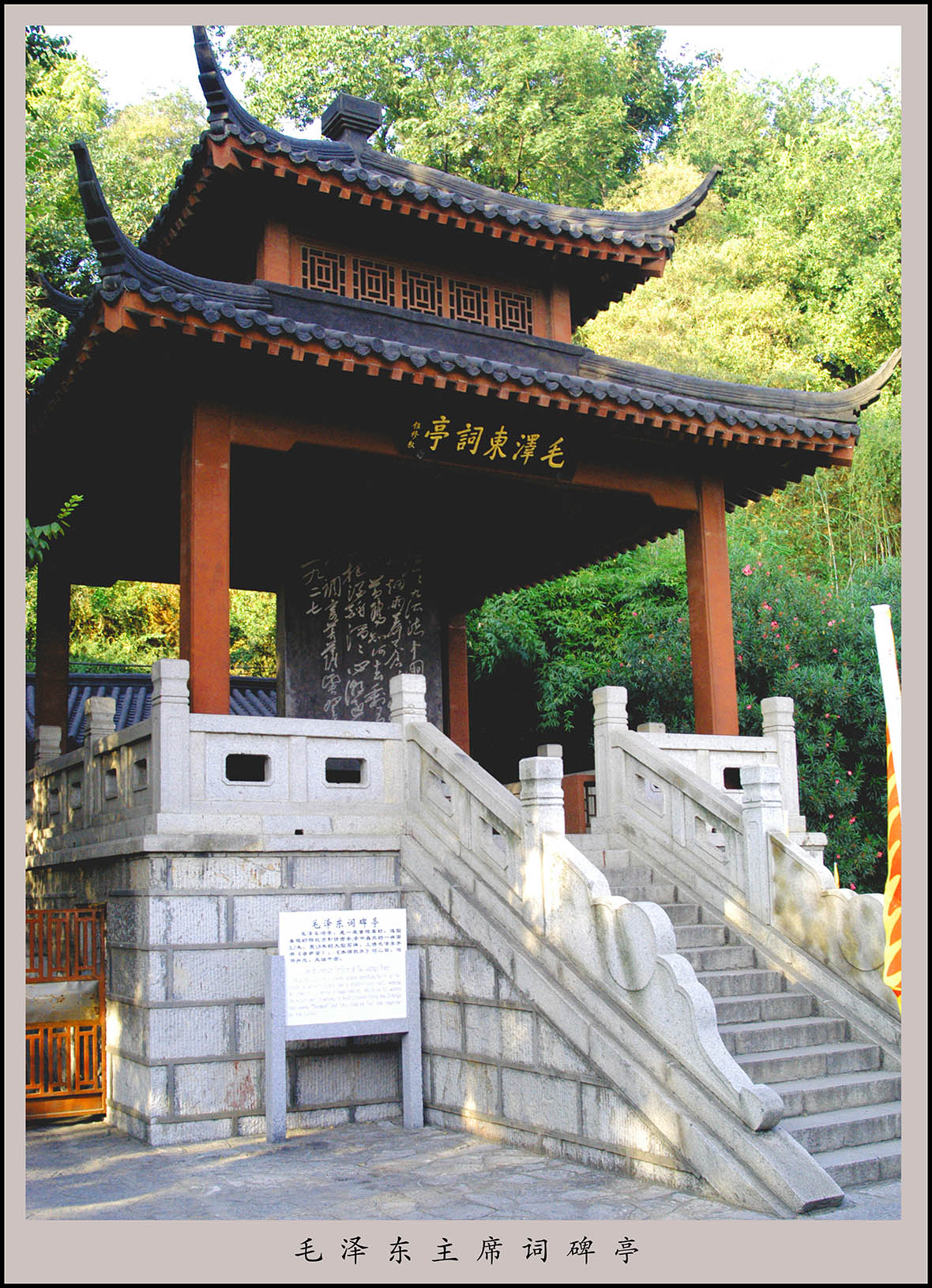
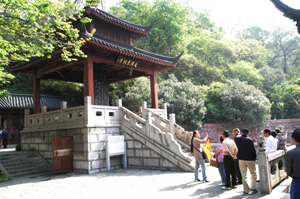
Tourist Service
- consulting hotline
Service hotline: 027-88875096
Supervision hotline: 027-88848188
027-12301
(Wuhan Tourism Bureau.)
027-87124701
(Hubei Tourism Administration)
- Official qr code.

Scan focuses on the yellow crane tower.
- Online consultant
- Complaint and advice

